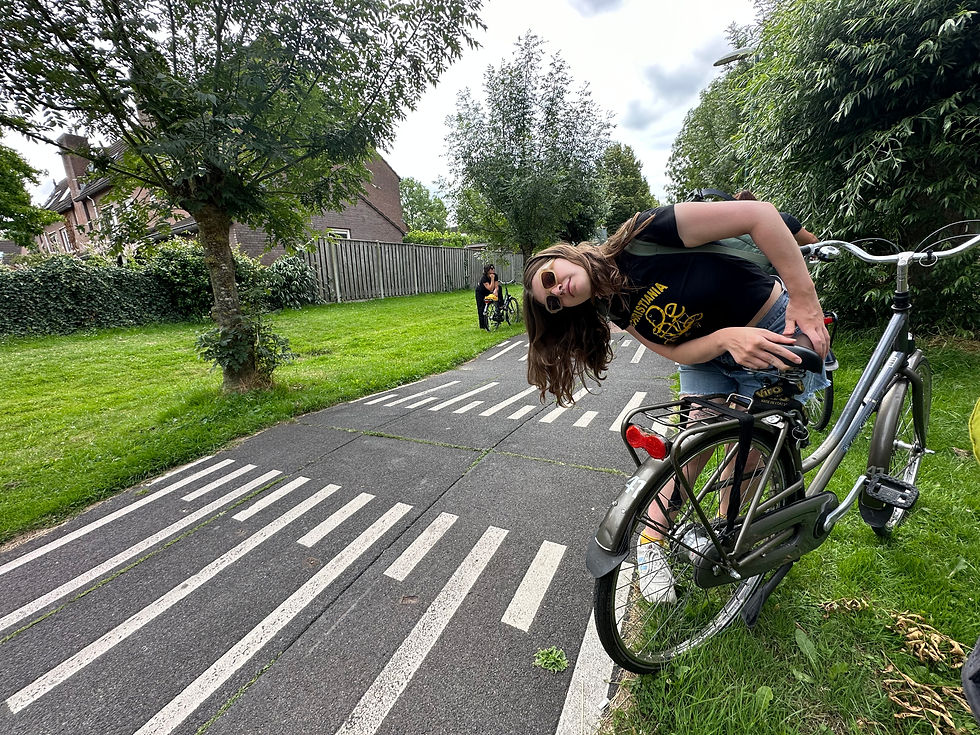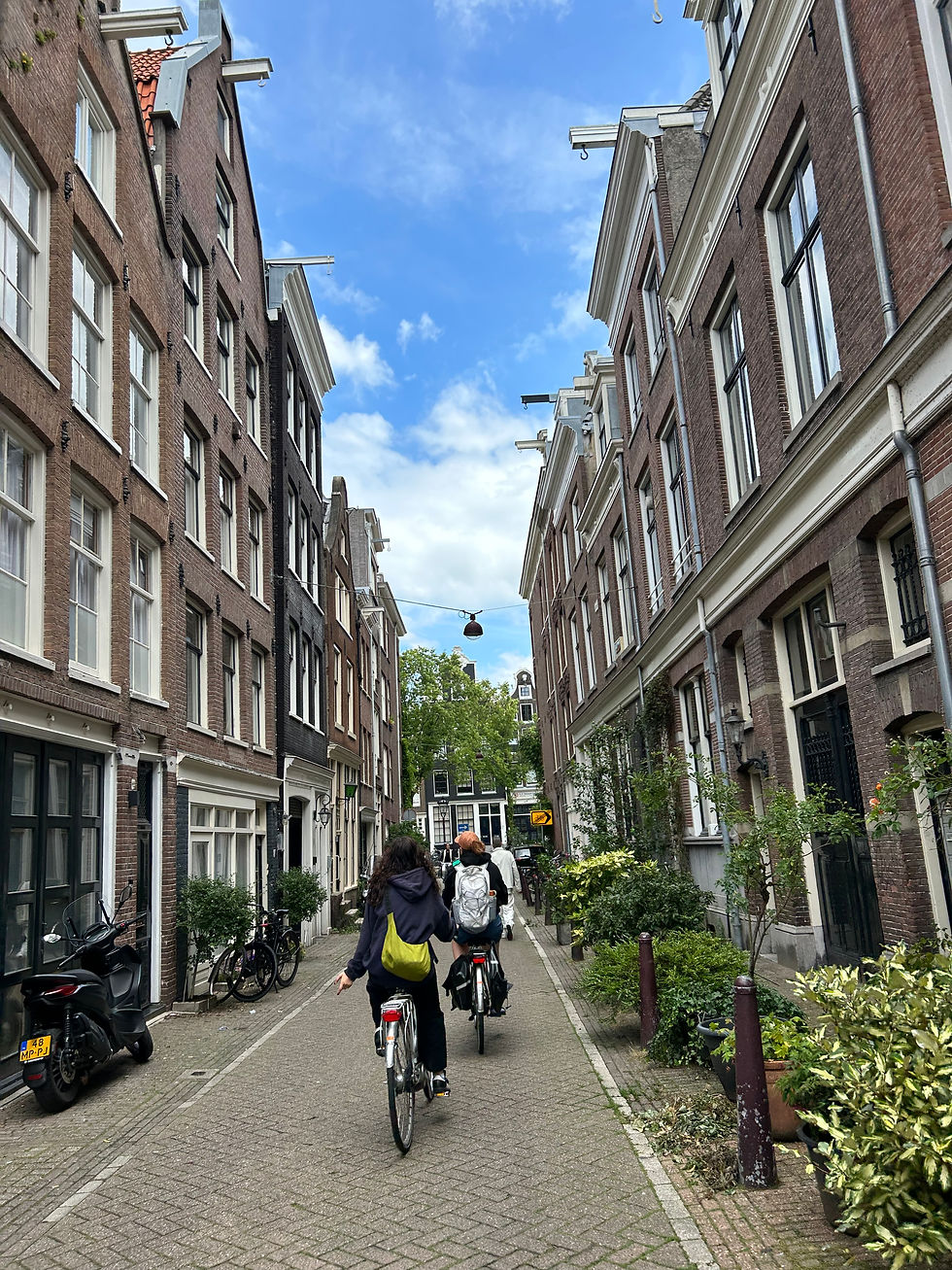Reflection (semi-structured) June 27
- emmameyer22
- Jun 29, 2023
- 2 min read
It has been incredible to get everywhere by bike thus far. Almost everything is a 5-15 minute bike ride away. I love how friendly most people are as well as the openness to ask questions. I am embracing the learn by doing motto to its full extent.
Yesterday we went to the Cycle Superhighway office and listened to a presentation from one of the communications directors. There are 29 municipalities in Denmark that manage the superhighways in their jurisdiction, however there is collaboration on projects. The average trip lane is 13 KM compared to the average trip lane of the S train which is 12 KM. Their planning of the cycle superhighway network is based on heat maps; where people live, work, and go to school. Making a city bike friendly is not solely based on the infrastructure. The details such as signage, count downs, and banisters encourage bike use and bike culture.
Today we went to the Jan Gehl firm where we listened to a presentation on mobility and public space planning. The traditional planning approach is buildings, traffic life, whereas the Gehl approach is life, space, buildings. You have to understand the way people think and move in space. Human scale, the perception of travel time, and local destinations are important to making good, well used spaces.

In my CRP program Jane Jacobs’ eyes on the street philosophy is emphasized in our curriculum. There’s this concept that visibility and safety is promoted by mixed-use, high density, and transparency. I have noticed that the courtyards and many of the playgrounds are more secluded, enclosed by vegetation. These experiences have opened my eyes to learning through real world experiences vs learning by reading and understanding theory. While both are important, the physical experience of space and city design is something that cannot be supplemented by books.
Questions:
How common are bicycle pedestrian collisions?
Besides surveying people about their use of cycle highways or parks how is community engagement conducted?
How does the backlash of bicycle projects in Denmark compare to the US?
Why do so many Danes have cars when they live in one of the most bike-friendly cities in the world?
How do you implement bicycle infrastructure from Copenhagen in the US while still meeting the specific needs of the community you are planning for?




I have thinking been about the perception of travel time in my own travels of late. It’s astonishing how much effect design has on this perception. Walkable mixed use density, at least to me, makes for a much more pleasant experience and travel time feels markedly less than it actually is. I think this, combined with active transportation, is what makes people healthier overall in this kind of design.